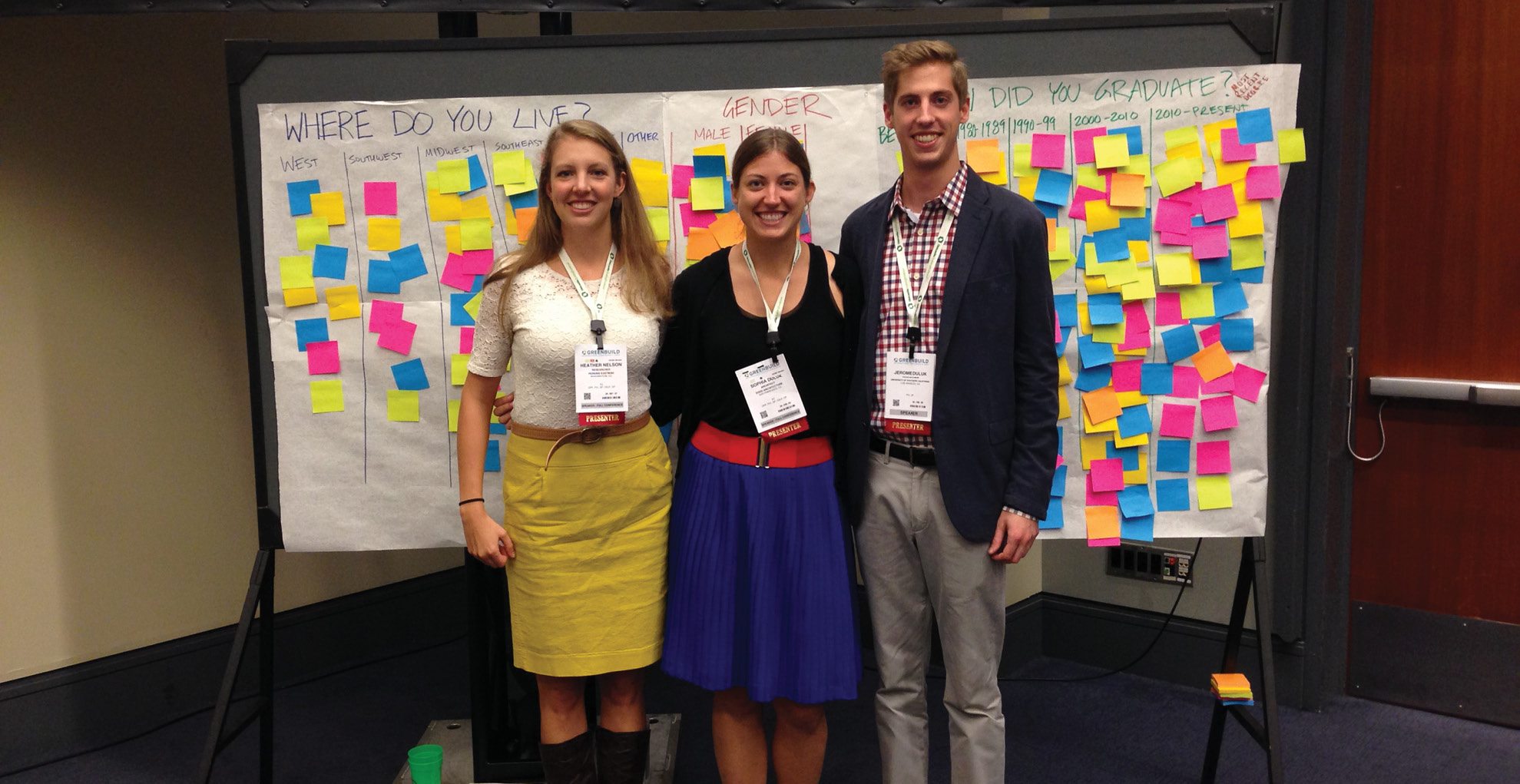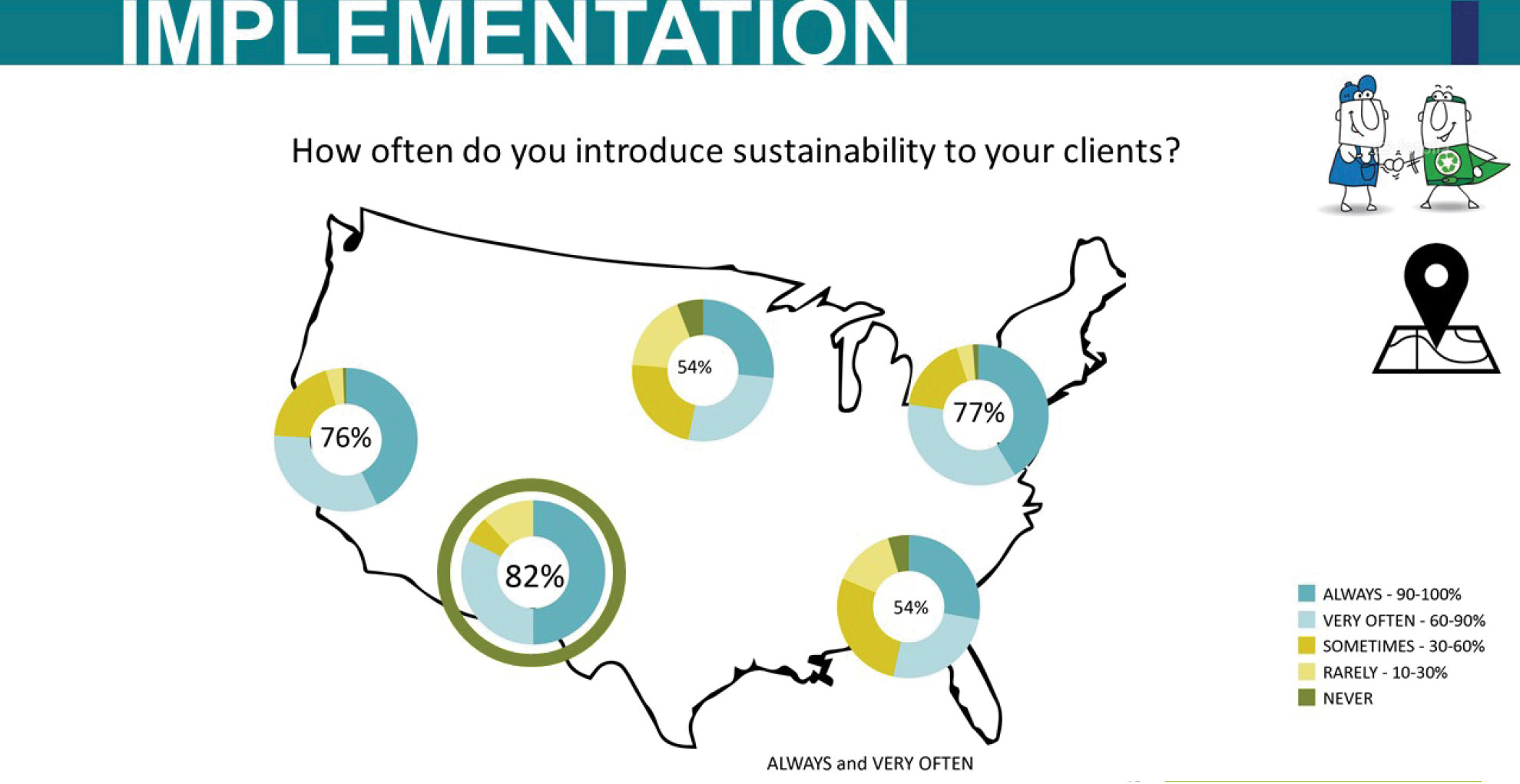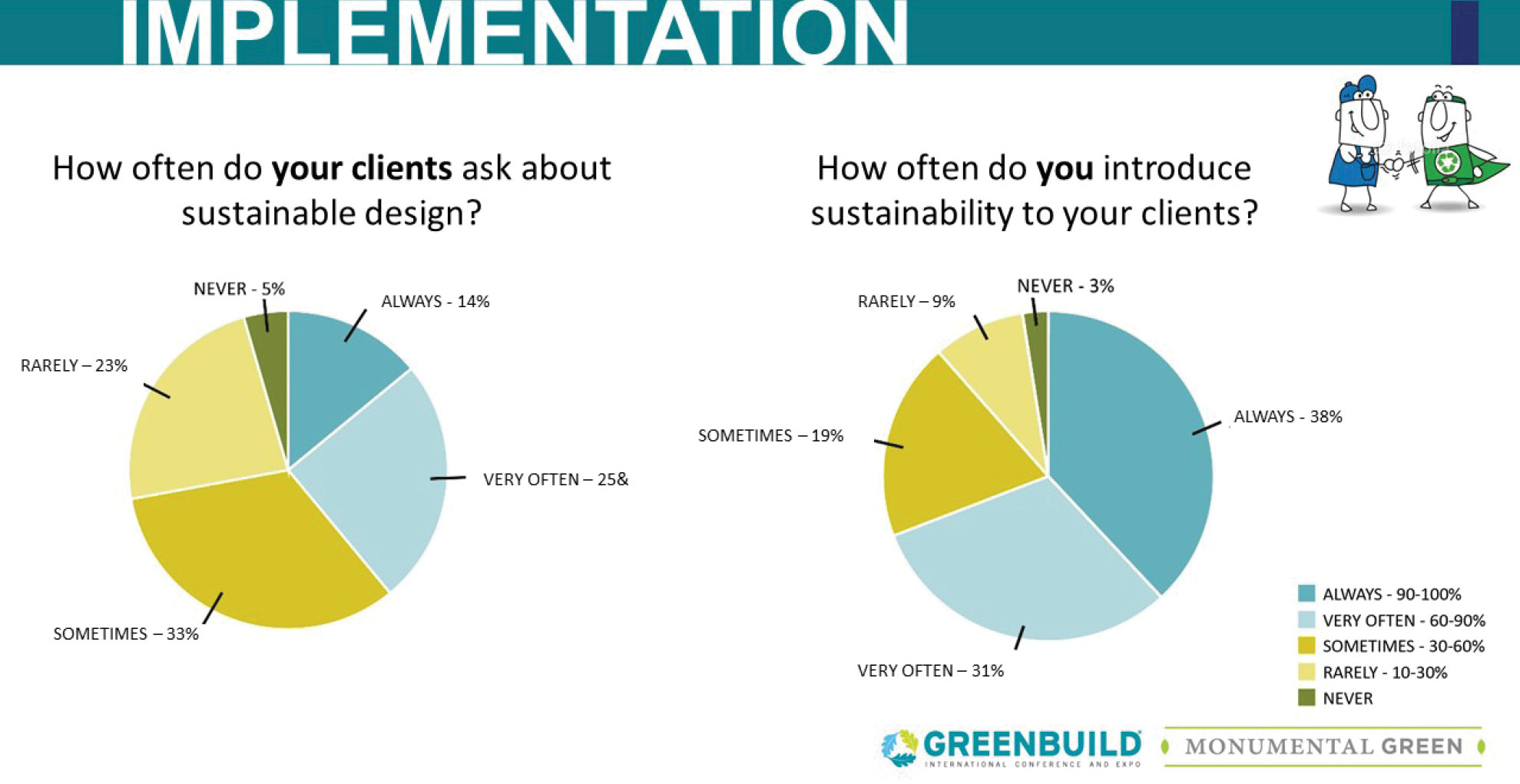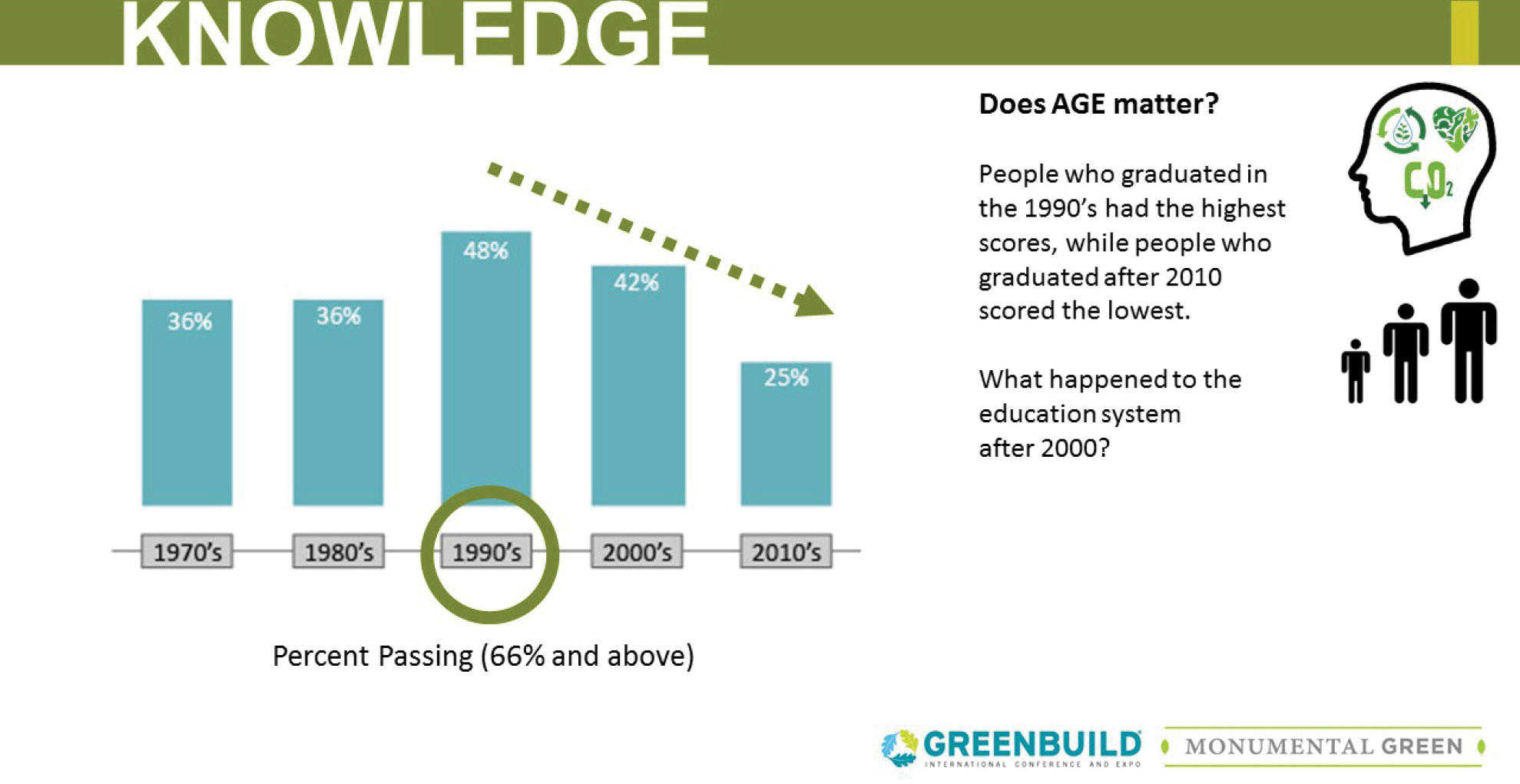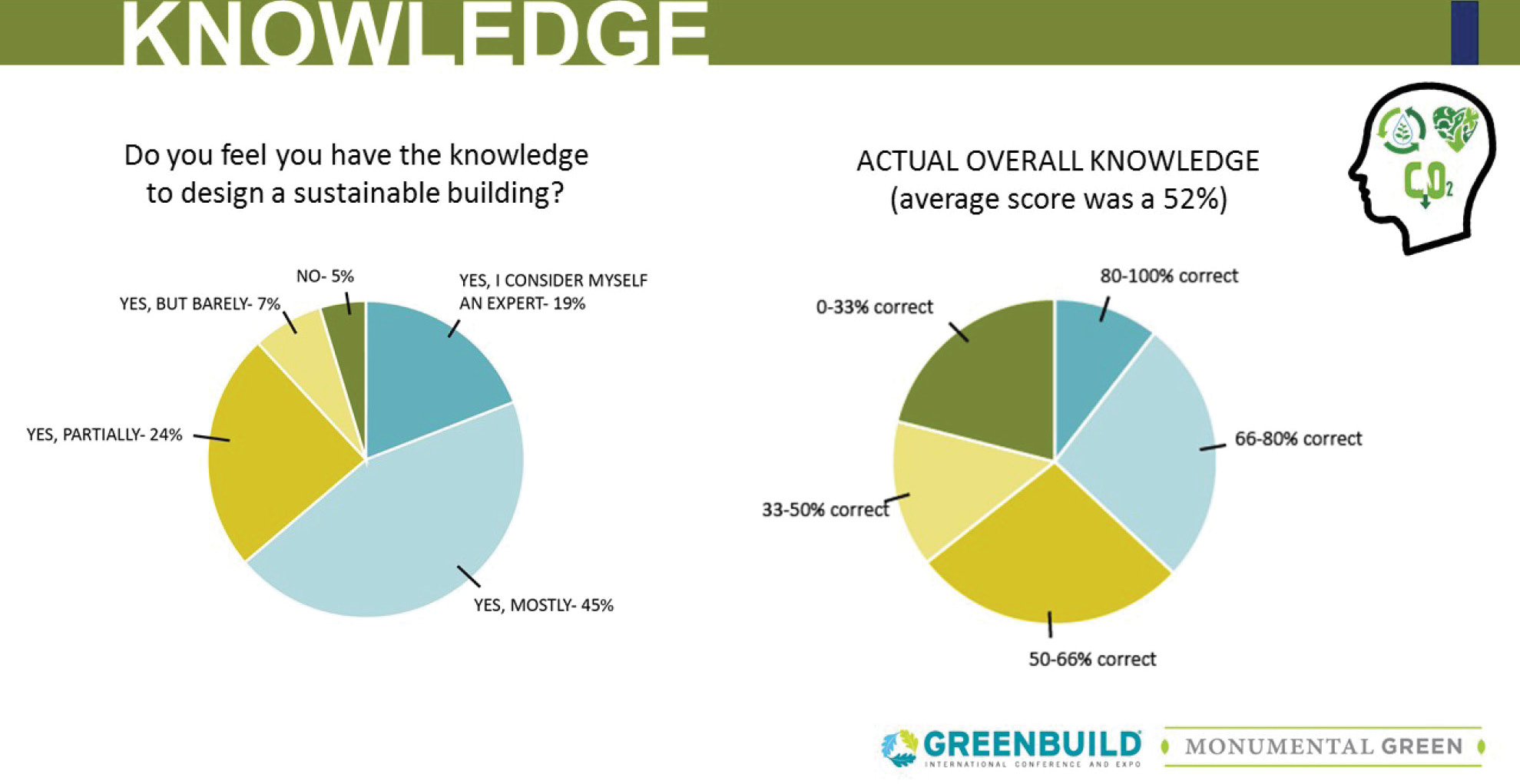Greenbuild 2015: Reflections
I had the fortune of spending the week of November 16 in Washington D.C. at the 2015 Greenbuild Conference. My research group was accepted to present our session, How Age and Gender Effect the Path to Carbon Neutrality, and we were very excited to share our research. I have been working on this project with my co-presenter, Heather Nelson, for about two years now, and my brother, Jerome Duluk, who is excellent with statistical data analysis, joined our team a few months ago to help us with an in-depth analysis. We applied to present at Greenbuild about a year ago, and after the three tier review system, we got our notification that of the only 18% of sessions that were accepted, we were one of them! Once we got this notification, the real work began to extract the most interesting nuggets from our study.
When Heather and I both graduated with our Master’s degrees from the University of Oregon, we left our sustainability bubble of a school and entered into the real world. We were quickly struck by the lofty goals of Net Zero Energy (NZE), and the ambition of the 2030 Challenge, but were disheartened by the overall lack of progress towards these goals. We began to ask why this was happening. Are architects blaming cost and lack of interest from clients? Do architects have the knowledge they need to reach these goals?
To begin to answer these questions, we launched a national survey with two parts:
1. A knowledge section to test architect’s knowledge of basic passive design strategies.
2. An implementation section where we gleaned how they both gained and applied this knowledge.
The results were compelling, with a mixture of confirming and disproving our hypotheses. We worked over the course of a few months to determine what was significant and what was insignificant, and what would interest attendees at our session.
The day of our session finally arrived. We were in a special set room, which meant we had multiple screens, a collaboration style table arrangement, and a dynamic central stage that would lend itself well to the three of us moving during our session. When we got through the methods and the raw data, we led a quick activity to see who in the room would have, according to our data, gotten the highest scores on our knowledge section. In our survey the average score was a 52%, a failing score at most universities. We first asked everyone in the room to stand up, and then proceeded to ask all the women to sit down. Then, the people who live in the Midwest and Southeast were asked to sit, followed by those who had not graduated in the 1990s. We were left with less than 15 of our 150+ attendees still standing.
This was an impactful activity, but what we learned from our knowledge section is that gender, age, and location do not have a statistically significant impact on your actual knowledge. So being a man, or from the West Coast, or graduating in the 1990s, does not inherently make you smarter. What makes you smarter, which we learned from our implementation section, is where you get your information, and how often you get it.
We found that people who regularly connect with colleagues about sustainability via conferences, lunch–and-learns, and webinars, not only had higher scores, but also were far more likely to introduce sustainability to clients. From our survey we learned that more than ¼ of architects introduce sustainability less than half the time, and that 12% of architects report they introduce sustainability to less than ¼ of clients. We also saw that working on a NZE building, which only 29% of respondents have done, and measuring building performance post-occupancy, which only 4% of architects are regularly doing, had a huge effect on both knowledge level and how often knowledge was shared with clients and other architects. Working on a NZE building forces architects to push the limits of design, while doing post-occupancy studies can teach us what was successful and unsuccessful in our projects, which we can carry into future projects. When we looked at the age breakdown from our survey, we found that people who had graduated between 2010 and the present had the lowest scores on the knowledge section, and they felt that education was the biggest problem in our field.
We finished our presentation with a discussion, which caused our session to run over due to the attendees being so deep into the discussions taking place. We spurred some great questions about what people are currently doing in their practice to share knowledge, and reflect on how often they bring up sustainable design practices to clients. I have presented at four other conferences, including the American Solar Energy Society Conference and the Gulf Coast Green, and this was my favorite presentation that I have been a part of. Hearing people ask more questions and want to know what they could be doing better was inspiring, and many people came up to us afterwards commenting on how our presentation was their favorite session.
Overall, Greenbuild was an amazing experience. There’s nothing like presenting your hard work in front of 150+ people. I am grateful that I had the opportunity to present, and to anyone that has something they are passionate and knowledgeable about – do not be afraid to share it with the world.
